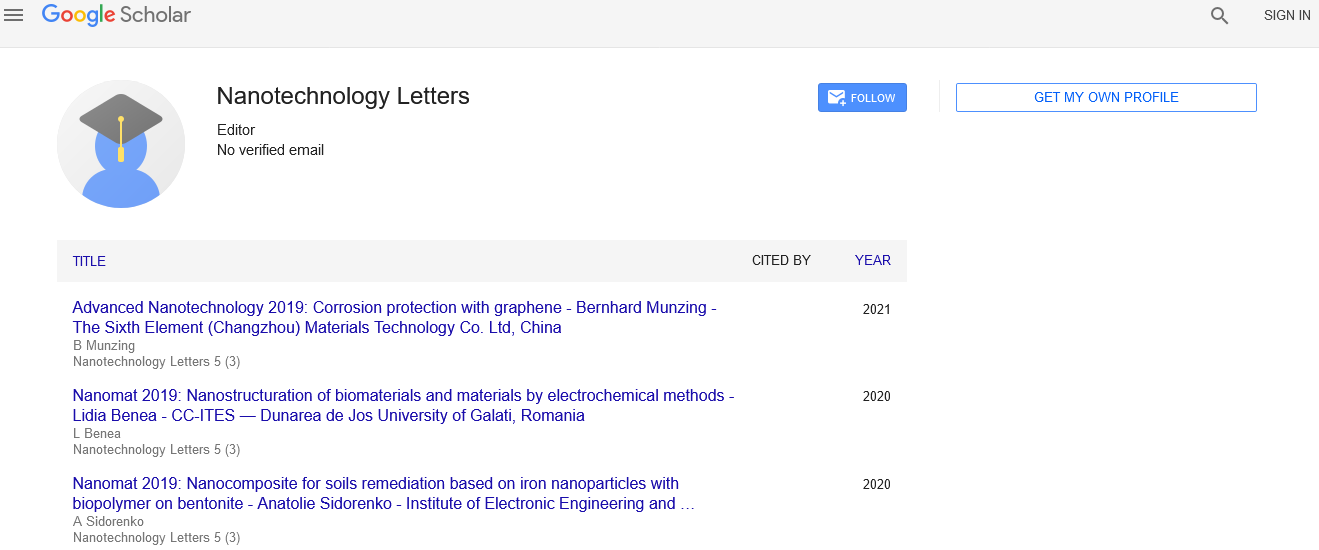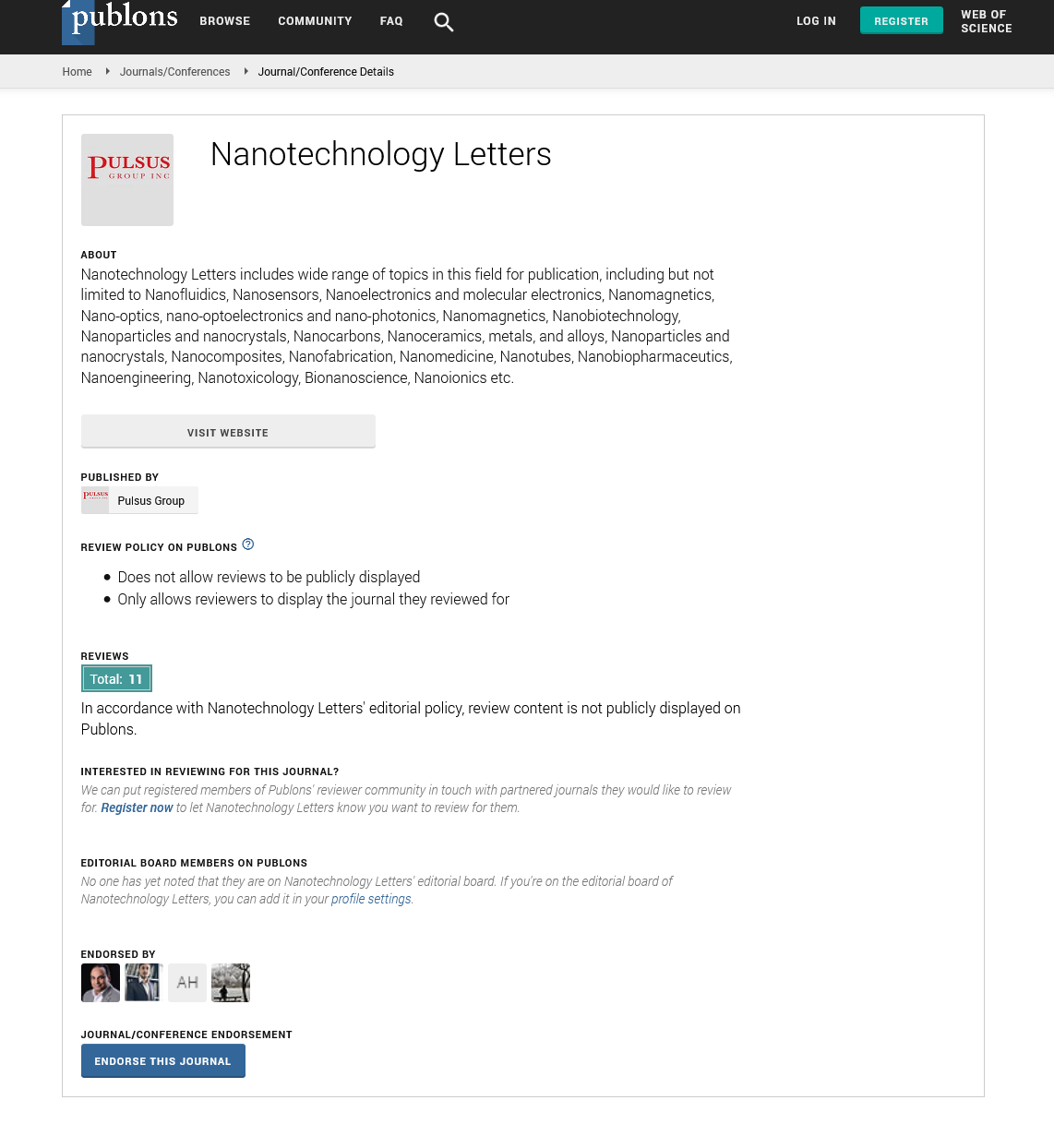
Sign up for email alert when new content gets added: Sign up
Abstract
Smart Materials Congress 2020: The Novel Porosity-Elasticity Relationship to Approximate the Effective Elastic Moduli of Porous Nano-Biomaterials - Mohammad Hassan Shahavi, Amol University of Special Modern Technologies (AUSMT), Iran
Author(s): Mohammad Hassan ShahaviPorous nanomaterials are extensively used in biomedical engineering. In order to use the full potential of these biomaterials, their mechanical behavior has to be entirely characterized. Porosityelasticity relations are commonly used in literature to estimate the effective elastic moduli of the porous structures. Scrutiny of these relations shows that they only consider the effect of total porosity on the properties of the porous materials. However, porous nano-biomaterials such as the scaffolds usually contain a large amount of open-cell pores, which are quite impressive on the behavior of such structures. In this paper, an innovative relationship is developed to approximate the effective Young’s modulus of the porous bone scaffolds in terms of the values of total and open porosities. Modified Mori-Tanaka scheme, which was recently established to enable the wellknown Mori-Tanaka approach to consider the effect of open-cell pores, is used in the current study to calculate the effective elastic moduli of porous structures with different porosities and various open to total porosity ratios and statistical relations are developed for Young’s modulus according to the findings. The obtained statistical relation is then used to compute the effective elastic properties of some porous hydroxyapatite bone scaffolds found in the literature. A comparison between the values obtained from the proposed relation and the conventional porosityelasticity relationships shows the reliability of the developed formulation. The flow research on smaller scale and nano-biomaterials is required to enormously affect human social insurance. The applications incorporate clinical gadgets, diagnostics, sensors, tranquilize conveyance frameworks, and tissue/bone building. Medication conveyance frameworks ought to be biocompatible taking into consideration high payloads of medication atoms without untimely medication discharge, be site explicit for focusing on conveyance, and discharge the medication at a controlled rate arriving at viable neighborhood sedate fixations with the least symptoms conceivable. Furthermore, tissue building, especially regenerative prescriptions, is a recently developing field which helps and expands the fix and recovery of inadequate and harmed tissues/organs. Manufactured, common and inorganic permeable based biomaterials can be utilized as e.g., medicate bearers and platforms for tissue/bone building treatments and for locally control the portion and span of the arrival of medication atoms. Through and through, this extraordinary issue will ideally give information on the advances and latest permeable based biomaterials, frameworks and different advances expected to grow definitely tissue/bone built and medication conveyance frameworks. A few instances of the techniques for planning, portrayal and uses of these materials are likewise introduced and examined in detail in this issue. In this uncommon issue of Biomatter a few instances of permeable based biomaterials utilized for tissue building and medication conveyance applications are introduced. Five exceptional center audits and three unique center reports feature and depict in detail probably the latest procedures and techniques to create permeable based biomaterials for biomedical applications. The basic unique paper by Fuchigami and partners exhibits that nano-sized capsular structures and ultrathin shells can be pertinent as a medication transporter in attractively guided medication conveyance frameworks. The breadth of FePt containers changes by altering the size of the silica format particles and the shell thickness (10 nm) and by modifying the measure of FePt nanoparticles amassed on the silica layout particles. Also, half and half and system cases show polarization and are relied upon to display superparamagnetic conduct at estimated internal heat level. At the point when lipid-covered FePt organize cases are stacked with anticancer medication, doxorubicin, the cell poisonousness increments. The subsequent unique exploration article by Lin and Wang presents an alginate hydrogel created into a sinewy structure by controlling the working boundaries in a wet-turning framework for planning of skin twisted dressings with various properties. The exact control of those working boundaries tremendously affects the size of the filaments and the sinewy structure, and they additionally influence the presentation of the dressings as far as e.g., tranquilize discharge, growing and bacterial hindrance potential. In the third unique examination paper, Fonte and partners break down the impact of cryoprotectants on PLGA nanoparticles' solidness and porosity after freeze-drying. The traditional way of eating high-pressure foods for cell affinity does not fit its definition. The relationship between the mass modulus and the Young's modulus that forms the basis of their general arrangement in the volume volume structures is shown to be irrelevant. The bulk modulus describes the stress / strain relationship of strong, unhealthy bodies with minimal deterioration, and the plant cell is best described as a fast, fluidfilled structure with a polymer base. Because the cell walls have a polymer structure, another method of mechanical analysis was introduced using the principles of polymer elasticity. This preliminary study identifies the basis of polymer mechanics as they will be used on cell walls and discusses how the matrix and microfibrillar network strengthens the stress / denser relationship in the cell wall in response to turgor pressure. In subsequent studies, these concepts will be expanded to include anisotropic expansion as governed by the microfibrillar network. Elastic modulus is an important physical property in the application of ceramics structure. However, bending tests as a general method for determining this area require some adjustment. In addition, the elastic modulus of ceramics may vary because it depends on the porosity content. For the formal ceramics industry, such as ceramic tiles, this material is very important. This is driving the development of a new approach to improve efficiency or certification. In this study, an ultrasonic test was performed to determine the modulus of soda lime glass and ceramic tiles. The experimental parameter was the frequency of the search (1, 2, 4 MHz). Exposure to bulk and porcious was also made for analysis. The results from the ultrasonic test were compared with the elastic modulus from the bending test. Elastic modulus of sodalime glass based on the ultrasonic test showed the best result with a 2.69% error of the 2 MHz probe relative to the test result. Testing on red and white clay tiles still contained error in up to 41% and 158%, respectively. The results of the red clay tile showed a tendency for the 1 MHz probe to provide better accuracy in determining the elastic modulus. However, experiments on white ceramic tile show a different culture. It was due to the presence of porosity and the effect of the field.





